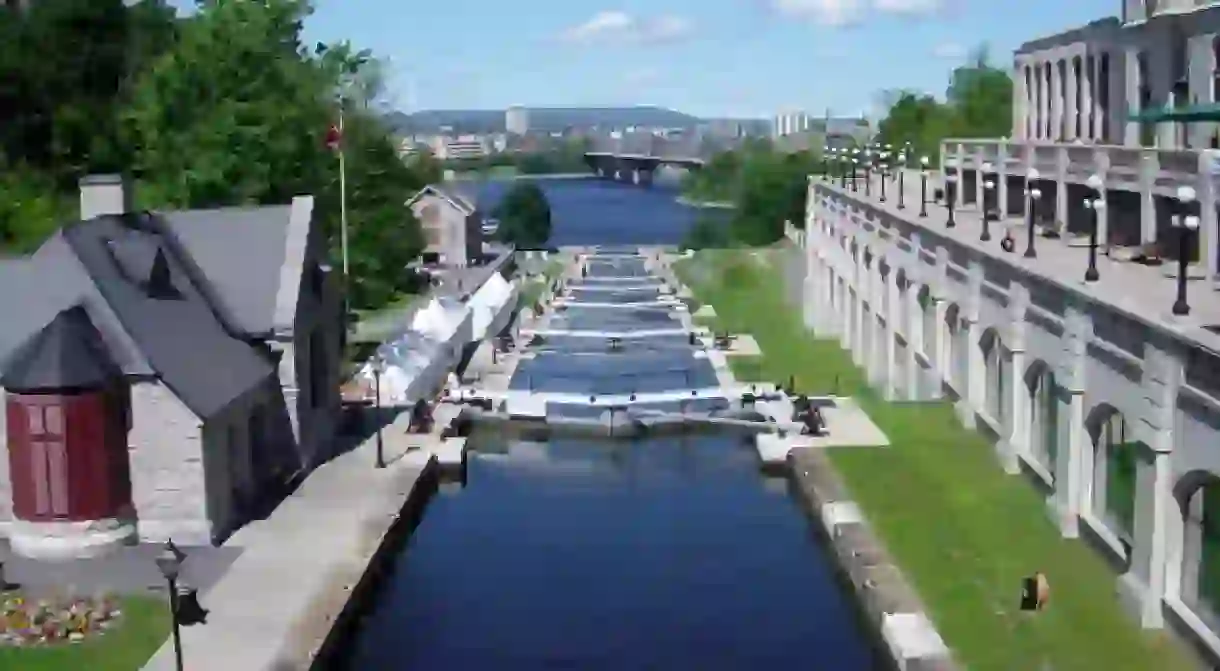The History Of The Rideau Canal: A UNESCO World Heritage Site

UNESCO, short for United Nations Educational, Scientific, and Cultural Organization, prides itself on ‘building peace in the minds of men and women.’ This includes compiling a list of World Heritage Sites — from buildings to cities to natural phenomena — considered to be of special cultural or physical significance, including 17 Canadian sites. The Rideau Canal, Ontario’s only World Heritage Site, is a majestic waterway that connects Kingston and Ottawa.
The Rideau Canal, located in Canada’s capital city, is a chain of lakes rivers and canals that stretch 202 km from Kingston to Ottawa. As one of Canada’s treasured historic sites, tourists and locals alike make their way to this expansive waterway surrounded by stone walls and greenery. Referred to as ‘the canal’ by locals, the tranquil waters are a haven for exercise enthusiasts: its a hot spot for bikers, walkers, runners, rollerskaters, and cyclists during the warmer months, and once the canal turns into a frozen wonderland during the winter, expect to see plenty of ice skaters. Going by the name of the Rideau Canal Skateway, it’s considered the world’s largest naturally frozen skating rink by Guinness World Records, stretching along 7.8km.

The Rideau Canal was built between 1826 and 1832 by Colonel John By of the British Royal Engineers in reaction to the War of 1812. The canal’s construction took more than six years to complete, and involved thousands of workers — over 1,000 of which died during its construction from disease and accidents; many of them were buried along the banks of the rivers. While the Rideau Canal comprises many naturally occurring canals and rivers, there was a considerable effort made to extend the waterway; workers needed to construct the additional 19km by hand, which required digging and clearing Canada’s wild terrain.
Meant for military use as means to secure trade and communications between the major cities of Montréal, Québec City, and Kingston, the canal also served as a way to keep British ships from reaching the United States through the border along New York. By the time it was completed in 1832, Canada and American relations were well and resolved, allowing the canals to serve as a way for commercial goods to be shipped from the US to the various cities in Ontario. The canals were also converted to serve as a leisure boat waterway — a purpose still in place today.
According to UNESCO, the canal is a ‘masterpiece of creative genius [and] the best-preserved example of a slackwater canal in North America.’ It’s also the only canal dating back to the 19th century — an era when North America was building canals quite regularly — that has continued to remain in use with most of its original structures intact.
Today, the canal is a subtle representation of intangible history, a landmark that will continue to remind Canadians of their country’s earlier days.
By Culture Trip Toronto













